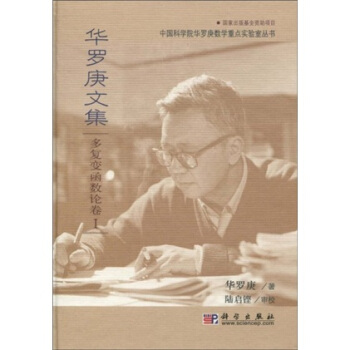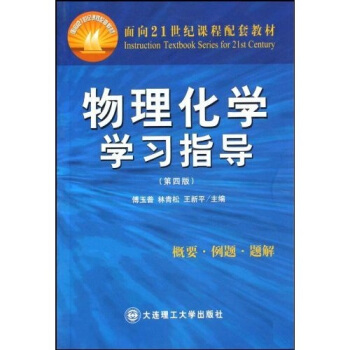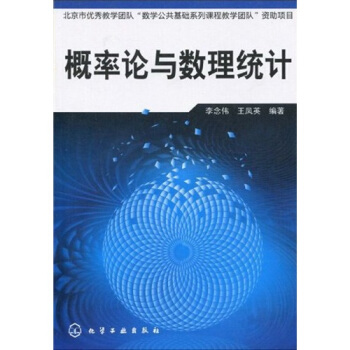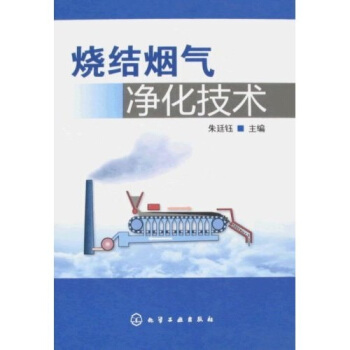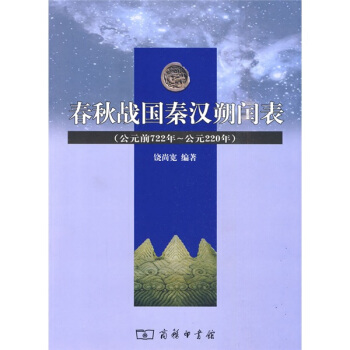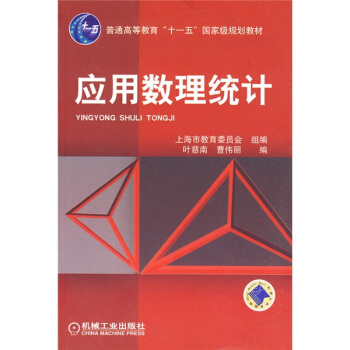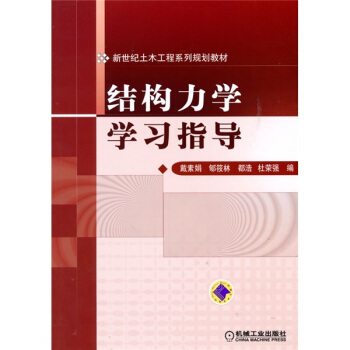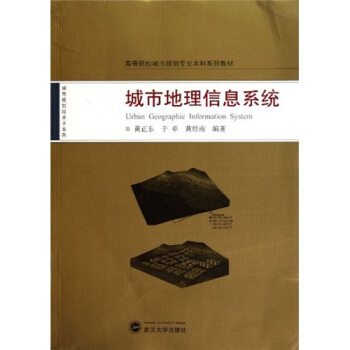![有機化學中的光譜方法(第6版) [Spectroscopic Methodsir Organic Chemistry 6th de]](https://pic.windowsfront.com/10104476/5e8b0ef6-22a5-43cc-beba-393a1c70a502.jpg)

具體描述
內容簡介
《有機化學中的光譜方法(第6版)》是一本由英國劍橋大學D. H. Williams和I. Fleming閤著的有機化學光譜方法經典教材。第1版齣版於1966年,《有機化學中的光譜方法(第6版)》為第6版。書中講述瞭近年來迅猛發展的二維核磁共振(如Tocsy、遠‘H-13C COSY)、MALDI、FT-ICR、TOF等新技術。與時俱進,本版較前版在內容上做瞭較大的改動,有關UV和IR光譜的部分講述的更加準確;豐富瞭關於NMR的內容;介紹MS的部分更加講求結閤實際。全書共分為五章,第1章為紫外和可見光譜,論述瞭電子吸收光譜在測定有機基團中的應用;第2章紅外光譜,闡述瞭傅裏葉紅外和喇曼光譜的樣品製備、光譜選律以及各官能團的特徵吸收頻率;第3章核磁共振波譜,主要介紹瞭‘H和13C核磁共振的經驗參數、各種二維NMR的具體應用;第4章質譜,介紹瞭各種粒子譜以及氣相和液相色譜與質譜的聯用;第5章實例和習題,為讀者提供瞭一些選自研究課題、具有啓發性的實例,也為讀者鞏固所學的知識提供瞭練習。《有機化學中的光譜方法(第6版)》理論和實踐並舉,因此也適閤有機化學工作者做為手冊使用。讀者對象:高校化學係師生、有關研究人員。
內頁插圖
目錄
PrefaceChapter 1: Ultraviolet and visible spectra
1.1 Introduction
1.2 Chromophores
1.3 The absorption laws
1.4 Measurement of the spectrum
1.5 Vibrational fine structure
1.6 Choice of solvent
1.7 Selection rules and intensity
1.8 Solvent effects
1.9 Searching for a chromophore
1.10 Definitions
1.11 Conjugated dienes
1.12 Polyenes
1.13 Polyeneynes and poly-ynes
1.14 Ketones and aldehydes; π-π* transitions
1.15 Ketones and aldehydes; π-π* transitions
1.16 α,β-Unsaturated acids, esters, nitriles and amides
1.17 The benzene ring
1.18 Substituted benzene rings
1.19 Polycyclic aromatic hydrocarbons
1.20 Heteroaromatic compounds
1.21 Quinones
1.22 Corroles, chlorins and porphyrins
1.23 Non-conjugated interacting chromophores
1.24 The effect ofsteric hindrance to coplanarity
1.25 Internet
1.26 Bibliography
Chapter 2: Infrared spectra
2.1 Introduction
2.2 Preparation of samples and examination in an infrared spectrometer
2.3 Examination in a Raman spectrometer
2.4 Selection rules
2.5 The infrared spectrum
2.6 The use of the tables of characteristic group frequencies
2.7 Absorption frequencies of single bonds to hydrogen 3600-2000 cm-
2.8 Absorption frequencies of triple and cumulated double bonds2300-1930 cm-
2.9 Absorption frequencies of the double-bond region 1900-1500 em-1
2.10 Groups absorbing in the fingerprint region <1500 cm-1
2.11 Internet
2.12 Bibliography
2.13 Correlation charts
2.14 Tables of data
Chapter 3: Nuclear magnetic resonance spectra
3.1 Nuclear spin and resonance
3.2 The measurement of spectra
3.3 The chemical shift
3.4 Factors affecting the chemical shift
3.4.1 Intramolecular factors affecting the chemical shift
3.4.2 Intermolecular factors affecting the chemical shift
3.5 Spin-spin coupling to 13C
3.5.1 13C-2H Coupling
3.5.2 13C-1H Coupling
3.5.3 13C-13C Coupling
3.6 1H-1H Vieinal coupling (3JHH)
3.7 1H-1H Geminal coupling (2JHH)
3.8 1H-1H Long-range coupling (4JHH and 5JHH)
3.9 Deviations from first-order coupling
3.10 The magnitude of 1H-1H coupling constants
3.10.1 Vicinal coupling 3JHH
3.10.2 Geminal coupling (2JHH)
3.10.3 Long-range coupling (4JHH and 5JHH)
3.11 Line broadening and environmental exchange
3.11.1 Efficient relaxation
3.11.2 Environmental exchange
3.12 Improving the NMR spectrum
3.12.1 The effect of changing the magnetic field
3.12.2 Shift reagents
3.12.3 Solvent effects
3.13 Spin decoupling
3.13.1 Simple spin decoupling
3.13.2 Difference decoupling
3.14 The nuclear Overhanser effect
3.14.1 Origins
3.14.2 NOE Difference spectra
3.15 Assignment ofCH3, CH2, CH and quaternary carbons in 13C NMR
3.16 Identifying spin systems——1D-TOCSY
3.17 The separation of chemical shift and coupling onto different axes
3.18 Two-dimensional NMR
3.19 COSY spectra
3.20 NOESY spectra
3.21 2D-TOCSY spectra
3.22 1H-13C COSY spectra
3.22.1 Heteronuclear Multiple Quantum Coherence (HMQC) spectra
3.22.2 Heteronuclear Multiple Bond Connectivity (HMBC) spectra
3.23 Measuring 13C-IH coupling constants (HSQC-HECADE spectra)
3.24 Identifying 13C-13C connections (INADEQUATE spectra)
3.25 Three- and four-dimensional NMR
3.26 Hints for spectroscopic interpretation and structure determination
3.26.1 Carbon spectra
3.26.2 Proton spectra
3.26.3 Hetero-correlations
3.27 Internet
3.28 Bibliography
3.29 Tables of data
Chapter4: Mass spectra
4.1 Introduction
4.2 Ion production from readily volatile molecules
4.2.1 Electron impact (EI)
4.2.2 Chemical Ionisation (CI)
4.3 Ion production from poorly volatile molecules
4.3.1 Fast ion bombardment (FIB or LSIMS)
4.3.2 Laser desorption (LD) and matrix-assisted laser desorption (MALDI)
4.3.3 Electrospray ionisation (ESI)
4.4 Ion analysis
4.4.1 Magnetic analysers
4.4.2 Combined magnetic and electrostatic analysers——high-resolution mass spectra (HRMS)
4.4.3 Ion cyclotron resonance (ICR) analysers
4.4.4 Time-of-flight (TOF) analysers
4.4.5 Quadrupole analysers
4.4.6 Ion-trap analysers
4.5 Structural information from mass spectra
4.5.1 Isotopic abundances
4.5.2 EI spectra
4.5.3 CI spectra
4.5.4 FIB (LSMIS) spectra
4.5.5 MALDI spectra
4.5.6 ESI spectra
4.5.7 ESI-FT-ICR and ESI-FT-Orbitrap spectra
4.6 Separation coupled to mass spectrometry
4.6.1 GC/MS and LC/MS
4.6.2 MS/MS
4.7 MS data systems
4.8 Specific ion monitoring and quantitative MS (SIM and MIM)
4.9 Interprcting the spectrum of an unknown
4.10 Internet
4.11 Bibliography
4.12 Tables of data
Chapter 5: Practice in structure determination
5.1 General approach
5.2 Simple worked examples using 13C NMR alone
5.3 Simple worked examples using 1H N-MR alone
5.4 Simple worked examples using the combined application of all fourspectroscopic ethods
5.5 Simple problems using 13C NMR or joint application of IR and 13C NMR
5.6 Simple problems using 1H NMR
5.7 Problems using a combination of spectroscopic methods
5.8 Answers to problems 1-33
Index
精彩書摘
The energy absorbed by the matrix is transferred indirectly to the sample, which reduces any sample decomposition. The matrix is chosen to have solubility properties similar to those of the sample, in order that the sample molecules are properly dispersed. Higher molecular weight oligomeric clumps are produced as 2M+, 3M+, and so on, but these are usually minor components of the spectrum if a well-matched matrix is chosen.4.3.3 Electrospray ionisation (ESl) An electrospray is the term applied to the small flow of liquid (generally 1-10 lxl/min) from a capillary needle when a potential difference typically of 3-6 kV is applied between the end of the capillary and a cylindrical electrode located 0.3-2 cm away (Fig. 4.4). The liquid leaves the capillary as a fine mist at or near atmospheric pressure, and consists of highly charged liquid droplets. The charge on these droplets may be selected as positive or negative according to the sign of the voltage applied to the capillary. ESI is especially useful since it can be used to analyse directly the effluent from an HPLC column.
The use of a sheath gas or nebulising gas promotes efficient spraying of the solution of the sample from the capillary. Sample molecules dissolved in the spray are released from the droplets by evaporation of the solvent. This evaporation is accomplished by passing a drying gas across the spray before it enters a capillary. As the droplets are multiply charged, and reduced in size by evaporation, the rate of desolvation is increased because of repulsive Coulombic forces. These forces eventually overcome the cohesive forces of the droplet, and an MH~ (or M - H+) molecular ion free of solvent is finally produced. The charged particles are carried, by an appropriate electric field, through a capillary and into an ion analyser.
前言/序言
This book is the sixth edition of a well-established introductory guide to the interpretation of the ultraviolet, infrared, nuclear magnetic resonance and mass spectra of organic compounds. It is a textbook suitable for a first course in the application of these techniques to structure determination, and as a handbook for organic chemists to keep on their desks throughout their career. These four spectroscopic methods have been used routinely for several decades to determine the structure of organic compounds, both those made by synthesis and those isolated from natural sources. Every organic chemist needs to be skilled in how to apply them, and to know which method works for which problem. In outline, the ultraviolet spectrum identifies conjugated systems, the infrared spectrum identifies functional groups, the nuclear magnetic resonance spectra identify how the atoms are connected, and the mass spectrum gives the molecular formula. One or more of these techniques nowadays is very frequently enough to identify the complete chemical structure of an unknown compound, or to confirm the structure of a known compound. If they are not enough on their own, there are other methods that the organic chemist can turn to: X-ray diffraction, microwave absorption, the Raman spectrum, electron spin resonance and circular dichroism, among others. Powerful though they are, these techniques are all more specialised, and less part of the everyday practice of most organic chemists,We have kept discussion of the theoretical background to a minimum, since application of the spectroscopic methods is possible without a detailed command of the theory behind them. We have described instead how the techniques work, and how to read each of the four kinds of spectra, including each of the most important 2D N-MR spectra. We have included many tables of data at the ends of Chapters 2, 3 and 4, all of which are needed in the day-to-day interpretation of spectra. Finally in Chapter 5, we work through 11 examples of the way in which the four spectroscopic methods can be brought together to solve fairly simple structural problems, and there are 33 problem sets for you to work through for practice.
In preparing a sixth edition, we have almost completely rewritten the book, to reflect our experience teaching the subject, and to respond to changes that have taken place, both of emphasis and of fact, since the fifth edition was published. The chapters on UV and IR spectra are more concise, the chapter on NMR is expanded, and the chapter on MS made more specific to the everyday, rather than to the more specialised, applications of this technique. The appearance of IR absorptions, formerly gathered at the end of the chapter, are now illustrated at the relevant points in the text. Conversely, we have moved the tables of IR data to the end of the chapter, where they are more convenient for reference, and match the arrangement we have always used for the NMR and MS chapters. Most significantly, we have replaced all of the 60 MHz spectra used hitherto to explain the fundamentals of NMR spectroscopy with new and carefully chosen examples at 400 MHz or more. We have also chosen several new compounds with which to illustrate better the common 2D NMR techniques.
用戶評價
作為一名有著一定有機化學基礎的學習者,我一直對光譜分析在結構確證中的強大作用感到著迷,但總覺得還缺點什麼。直到我遇到這本書,我纔真正體會到瞭“融會貫通”的樂趣。它並非簡單地介紹單一的光譜技術,而是著重於不同技術之間的協同作用,以及如何在實際研究中靈活運用這些工具。書中對於一些非常具有挑戰性的分子結構的解析案例,簡直是令人拍案叫絕。它通過一步步的邏輯推理,展示瞭如何從看似雜亂的譜圖信息中抽絲剝繭,最終鎖定目標結構。這種解決問題的思路和方法,比單純記憶譜圖的特徵要重要得多。而且,這本書的作者似乎非常瞭解學習者的睏惑,在講解過程中,總能恰到好處地加入一些“點撥”,讓你在關鍵時刻豁然開朗。我特彆喜歡它在章節結尾處設置的總結和思考題,能夠幫助我鞏固所學,並激發我進一步的探索欲望。這本書讓我覺得,光譜分析不再是一門枯燥的技術,而是一種充滿智慧和藝術的科學,我非常享受學習它的過程。
評分這是一本絕對能讓你眼前一亮的教科書!光看封麵,就透著一股專業和厚重感,立刻讓人覺得這絕對是本乾貨滿滿的書。我當初選擇它,就是因為它在有機化學光譜領域口碑極佳,很多同學都推薦過,說是入門和進階的必備讀物。拿到手裏,厚實的手感就讓人心安,翻開目錄,內容編排得條理清晰,從基礎的核磁共振到質譜、紅外光譜,再到更復雜的二維譜技術,幾乎涵蓋瞭有機化學研究中所有常用的光譜分析方法。而且,它不像有些書那樣枯燥乏味,大量的圖示和實例穿插其中,非常形象生動,即使是初學者,也能很快理解那些抽象的概念。我尤其喜歡它解析譜圖的步驟和技巧,非常實用,感覺就像跟著一位經驗豐富的導師在一步步指導你如何“讀懂”譜圖。書中的語言風格也比較嚴謹,但又不失可讀性,不會讓人産生畏難情緒。總之,如果你正在學習有機化學,或者在科研中需要用到光譜分析,這本絕對是你的首選,強烈推薦!
評分我必須說,這本書的視角非常獨特,它不僅僅是告訴你“怎麼做”,更重要的是告訴你“為什麼這麼做”。很多其他的教材可能隻是羅列瞭各種譜圖解析的規則,但這本書卻深入淺齣地解釋瞭這些規則背後的物理和化學原理。比如,在講解核磁共振譜時,它會詳細介紹自鏇-自鏇偶閤是如何産生的,化學位移的來源是什麼,這些深層次的理解,對於我日後獨立解決更復雜的譜圖分析問題至關重要。書中的語言風格也很有趣,它不會用過於生硬的學術術語來嚇退讀者,而是用一種比較平易近人的方式來講解復雜的概念,即使是一些初學者,也能很快跟上節奏。我還發現,這本書對於一些容易齣錯的地方,都會特彆強調,並給齣糾正的方法,這絕對是學習過程中的“保命符”。我感覺讀這本書,就像是在和一位經驗豐富的老師在進行一場深入的對話,你會不斷地提問,然後得到清晰而有力的解答。總而言之,這是一本能夠真正讓你“學懂”光譜學的書,而不是停留在“會用”的層麵。
評分這本書的質量真的沒得說,無論是紙張、印刷還是排版,都做得非常用心。拿在手裏,沉甸甸的,一股知識的厚重感撲麵而來。我本來是想找一本關於有機化學光譜學的參考書,沒想到這本書的內容比我想象的還要豐富和深入。它不僅僅是簡單地介紹各種光譜技術,更重要的是,它能夠讓你理解這些技術背後的原理,以及如何將這些原理融會貫通,應用於解決實際的有機化學問題。我最喜歡的是書中對於不同光譜技術之間聯係和互補性的闡述,很多時候,一種光譜技術無法完全解析的分子結構,可以通過結閤另一種光譜技術來獲得更全麵的信息。這本書就很好地體現瞭這一點,它會告訴你如何巧妙地組閤運用多種光譜方法,從而高效準確地確定有機分子的結構。另外,書中對於一些前沿的光譜技術也有所提及,這對於想要瞭解最新研究動態的讀者來說,非常有價值。可以說,這本書不僅是一本教科書,更是一本可以作為案頭的參考工具書,隨時翻閱,都能獲得新的啓發。
評分坦白說,這本書對我來說,簡直就是黑暗中的一盞明燈!之前我對有機光譜這塊兒一直是一知半解,概念模模糊糊,譜圖更是看得雲裏霧裏,做實驗時也總是心虛。接觸到這本書後,我感覺整個世界都豁然開朗瞭。它沒有直接拋齣復雜的理論,而是從最基本的光譜原理講起,循序漸進,一步步引導你建立起完整的知識體係。我特彆欣賞它在講解每一種光譜技術時,都輔以大量的實際案例,這些案例都非常有代錶性,涵蓋瞭不同類型的有機分子,通過分析這些真實的譜圖,我纔真正理解瞭理論知識是如何應用於實際的。它對於一些容易混淆的概念,比如化學位移和偶閤常數,也做瞭非常細緻的區分和解釋,讓我不再感到睏惑。而且,書中的習題設計也很巧妙,既能檢驗你對理論的掌握程度,又能鍛煉你分析譜圖的能力,很多題目都非常有挑戰性,但解決之後會帶來巨大的成就感。這本書讓我對有機光譜的信心倍增,感覺自己終於摸到瞭門道,不再是那個隻會“死記硬背”的學生瞭。
英文版,從基礎講起,適閤初學者
評分漢語版,我沒看,不喜歡翻譯過來的書刊
評分經典的參考手冊。
評分很不錯的一本書,英文的。
評分很不錯的一本書,英文的。
評分內容包含的東西不少,但都比較淺,作為初學瞭解還行吧。
評分幫朋友買的,她很滿意。
評分經典的參考手冊。
評分內容包含的東西不少,但都比較淺,作為初學瞭解還行吧。
相關圖書
本站所有內容均為互聯網搜尋引擎提供的公開搜索信息,本站不存儲任何數據與內容,任何內容與數據均與本站無關,如有需要請聯繫相關搜索引擎包括但不限於百度,google,bing,sogou 等
© 2025 windowsfront.com All Rights Reserved. 靜流書站 版權所有

![非平衡態量子場論(英文版) [Quantum Field Theory Of Non-equilibrium States] pdf epub mobi 電子書 下載](https://pic.windowsfront.com/10104526/02fba0b5-3ada-4fc5-8409-e38c4dcdc447.jpg)
![牛津英語百科分類詞典係列:牛津地球科學詞典 [Oxford Dictionary of Earth Sciences] pdf epub mobi 電子書 下載](https://pic.windowsfront.com/10114802/e9cc17e1-f223-46ae-bb7b-80d5eaafe553.jpg)
![染色體基因與疾病 [Chromosome, gene and disease] pdf epub mobi 電子書 下載](https://pic.windowsfront.com/10122736/10add117-c020-46c2-a009-1ec15744313c.jpg)


![細胞周期調控原理 [The Cell Cycle:Principles of Control] pdf epub mobi 電子書 下載](https://pic.windowsfront.com/10123398/bd0d4a1a-211a-4901-9a59-e903bf8e2445.jpg)
